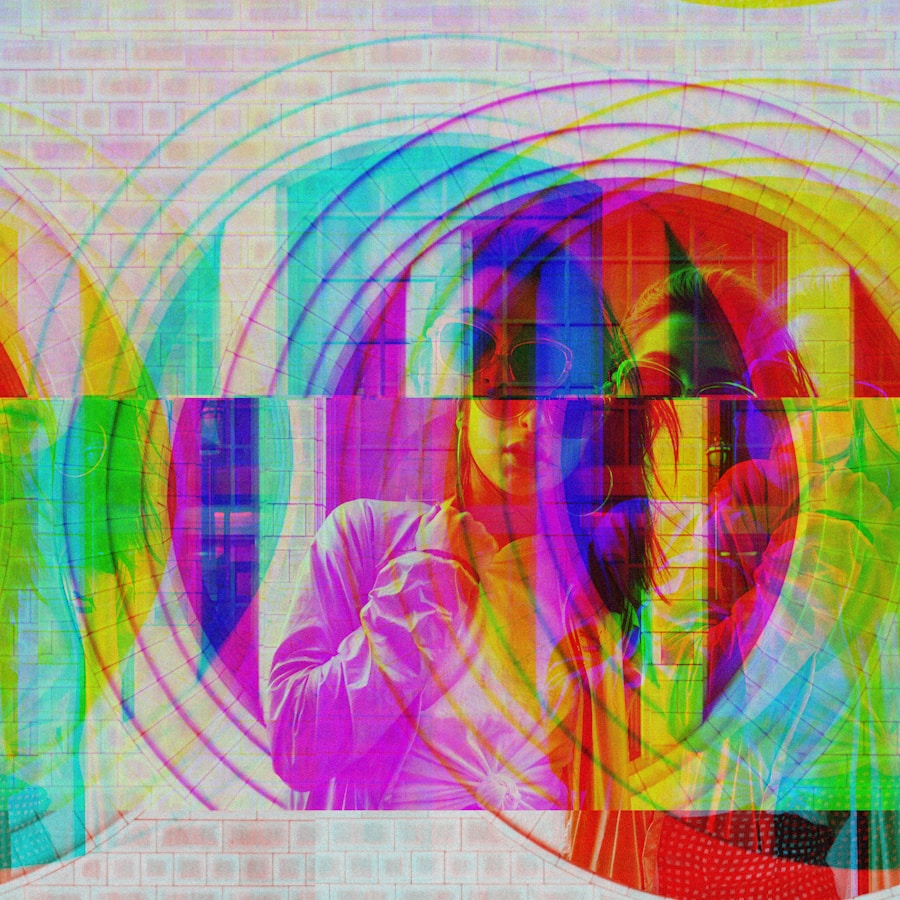Exploring the Virtual Life: A New Era of Digital Living
Description
The advent of virtual reality (VR) has marked a significant turning point in the evolution of technology, fundamentally altering how we interact with the world around us. Initially perceived as a niche technology primarily associated with gaming, VR has rapidly expanded its reach into various sectors, including entertainment, education, healthcare, and even real estate. The immersive experiences offered by VR allow users to transcend the limitations of physical space, enabling them to explore environments and scenarios that would otherwise be inaccessible.
For instance, VR simulations can transport users to ancient civilizations, distant planets, or even the depths of the ocean, providing an unparalleled sense of presence and engagement. Moreover, the technological advancements that have fueled the rise of VR are not limited to hardware improvements. Software development has also played a crucial role in enhancing user experiences.
High-resolution displays, advanced motion tracking, and haptic feedback systems have all contributed to creating more realistic and immersive environments. Companies like Oculus, HTC, and Sony have invested heavily in developing VR headsets that cater to both casual users and professionals. As a result, VR is no longer confined to the realm of entertainment; it is increasingly being recognized as a powerful tool for training and simulation across various industries.
For example, medical professionals can practice complex surgical procedures in a risk-free virtual environment, while pilots can undergo flight simulations that replicate real-world conditions without leaving the ground.
Key Takeaways
- Virtual reality technology is revolutionizing the way we live by creating immersive experiences in various aspects of our lives.
- Virtual communities are forming in the digital world, allowing people to connect and interact in new and innovative ways.
- The virtual economy presents numerous business opportunities, from virtual real estate to virtual goods and services.
- Virtual education is transforming the way we learn, offering interactive and engaging experiences for students in the digital age.
- Digital living has a significant impact on health and wellness, with virtual reality being used for therapeutic and wellness purposes.
Virtual Communities: The Social Aspect of Digital Living
Virtual Meeting Places
Platforms such as Facebook, Reddit, and Discord have become virtual meeting places where users can engage in discussions, share experiences, and collaborate on projects. The ability to communicate with others in real-time, regardless of location, has transformed how we build relationships and maintain social ties.
Support Networks and Camaraderie
The impact of virtual communities extends beyond mere social interaction; they also serve as support networks for individuals facing various challenges. For instance, people dealing with mental health issues can find solace in online forums where they can share their experiences and receive encouragement from others who understand their struggles. Similarly, niche communities focused on specific interests—such as gaming, crafting, or fitness—provide members with a platform to exchange knowledge and resources.
Redefining Friendship and Support
The rise of virtual communities has not only changed how we socialize but has also redefined the very nature of friendship and support in the digital age.
Virtual Economy: The Business Opportunities in the Virtual World

The emergence of virtual reality has given rise to a burgeoning virtual economy that presents numerous business opportunities across various sectors. As more individuals engage with digital environments, businesses are increasingly recognizing the potential for monetization within these spaces. Virtual goods and services have become a significant revenue stream, with companies offering everything from digital clothing for avatars to virtual real estate in expansive online worlds.
The success of platforms like Second Life and Fortnite demonstrates how virtual economies can thrive when users are willing to invest real money into their digital experiences. Moreover, the rise of non-fungible tokens (NFTs) has further revolutionized the virtual economy by allowing creators to monetize their digital art and assets in unprecedented ways. Artists and musicians can sell unique pieces directly to consumers without relying on traditional intermediaries.
This shift not only empowers creators but also fosters a new level of engagement between artists and their audiences. Additionally, businesses are exploring innovative marketing strategies within virtual environments, utilizing immersive experiences to promote products and services. For example, brands are hosting virtual events or creating interactive advertisements that allow users to engage with their offerings in a more meaningful way.
As the virtual economy continues to evolve, it is likely to reshape traditional business models and create new avenues for growth.
Virtual Education: Learning in the Digital Age
| Metrics | Statistics |
|---|---|
| Number of virtual education students | Over 6 million students in the US alone |
| Global virtual education market size | Projected to reach 9.3 billion by 2025 |
| Percentage of schools offering virtual courses | 70% of schools in the US offer virtual courses |
| Effectiveness of virtual learning | Studies show that virtual learning can be as effective as traditional classroom learning |
The integration of virtual reality into education has opened up exciting possibilities for enhancing learning experiences. Traditional educational methods often struggle to engage students fully; however, VR offers an interactive alternative that can captivate learners’ attention and facilitate deeper understanding. Through immersive simulations, students can explore complex subjects such as history or science in ways that textbooks cannot replicate.
For instance, a history class could take students on a virtual tour of ancient Rome, allowing them to experience the architecture and culture firsthand rather than merely reading about it. Furthermore, VR can cater to diverse learning styles by providing visual and kinesthetic experiences that enhance retention and comprehension. In subjects like biology or chemistry, students can conduct virtual experiments without the constraints of physical lab equipment or safety concerns.
This hands-on approach not only fosters curiosity but also encourages critical thinking and problem-solving skills. Educational institutions are beginning to recognize the value of incorporating VR into their curricula, with some universities offering specialized programs focused on immersive learning technologies. As these advancements continue to gain traction, the landscape of education is poised for a transformation that prioritizes engagement and experiential learning.
Virtual Health and Wellness: The Impact of Digital Living on Well-being
The intersection of virtual reality and health is an area of growing interest as researchers explore how digital living can influence well-being. VR has shown promise in various therapeutic applications, particularly in mental health treatment. Exposure therapy for conditions such as post-traumatic stress disorder (PTSD) or phobias can be conducted in controlled virtual environments where patients confront their fears gradually and safely.
This method allows therapists to tailor experiences to individual needs while providing a supportive space for healing. In addition to mental health applications, VR is also being utilized for physical rehabilitation. Patients recovering from injuries can engage in virtual exercises that promote mobility and strength while making the process more enjoyable.
Gamification elements within these programs encourage patients to stay motivated and committed to their recovery journeys. Furthermore, wellness applications that incorporate mindfulness practices or guided meditations are becoming increasingly popular among users seeking stress relief in their daily lives. By leveraging technology to enhance health outcomes, VR is reshaping how we approach wellness in an increasingly digital world.
The Future of Digital Living: Exploring the Possibilities of Virtual Reality

Breaking Down Physical Barriers
The concept of the metaverse is gaining traction, promising a future where physical limitations are diminished. This will enable individuals to engage with one another in entirely new ways, regardless of geographical location. As VR technology becomes more accessible and affordable, we can expect to see increased adoption across various demographics.
New Frontiers in Education and Business
likely to emerge, with educational institutions implementing VR as a standard teaching tool and businesses leveraging virtual environments for remote collaboration and training.
Redefining Social Interaction and Reality
social interaction are profound. As people become more accustomed to digital living, traditional notions of community may evolve further into hybrid forms that blend physical and virtual interactions. Ultimately, the future of digital living promises exciting possibilities that will continue to shape our experiences and redefine our understanding of reality itself.
If you’re interested in exploring virtual worlds and immersive experiences, you may also enjoy reading about the game Farlight 84. This futuristic battle royale game offers players the chance to compete in a post-apocalyptic world filled with high-tech weapons and intense combat. Check out the article here to learn more about this exciting virtual adventure.
FAQs
What is virtual life?
Virtual life refers to the experience of living and interacting in a digital or virtual environment, often through the use of technology such as virtual reality, augmented reality, or online platforms.
What are some examples of virtual life?
Examples of virtual life include virtual reality games and simulations, social media platforms, online communities, and virtual worlds such as Second Life and The Sims.
How does virtual life differ from real life?
Virtual life differs from real life in that it takes place in a digital or virtual environment, often with different rules and dynamics than those of the physical world. In virtual life, individuals can create and customize their own avatars, interact with others, and engage in activities that may not be possible in real life.
What are the benefits of virtual life?
Some potential benefits of virtual life include the ability to connect with others from around the world, explore new experiences and environments, and engage in activities that may not be accessible in real life. Virtual life can also provide a sense of escapism and creativity for individuals.
What are the drawbacks of virtual life?
Drawbacks of virtual life may include potential negative effects on mental health, such as addiction or social isolation, as well as concerns about privacy and security in online environments. Additionally, virtual life may not fully replicate the richness and complexity of real-life experiences.
How is virtual life evolving with technology?
Advancements in technology, such as virtual reality and augmented reality, are continually expanding the possibilities for virtual life. These developments are enabling more immersive and realistic virtual experiences, as well as new opportunities for social interaction and entertainment.





